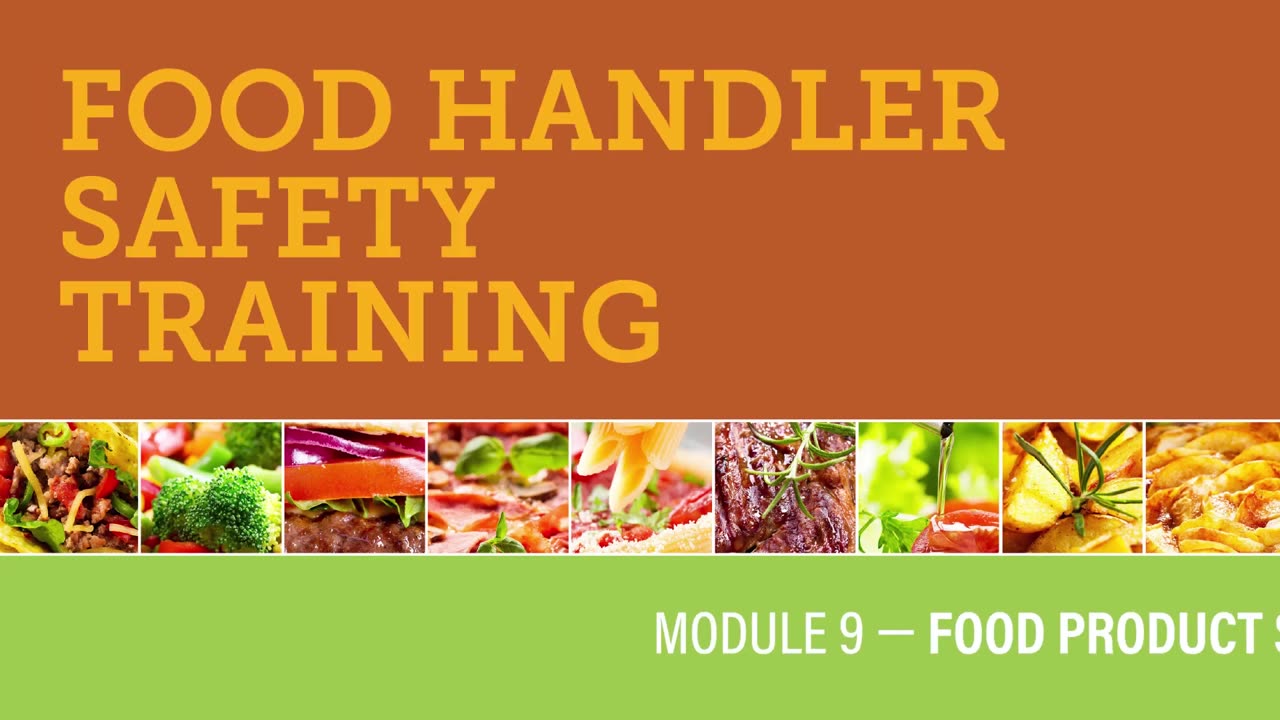Premium Only Content

Module 9 — Food Product Storage
### **Module 9: Food Product Storage**
Proper storage of food products is crucial to maintaining safety, quality, and preventing foodborne illnesses. This module outlines the principles and best practices for storing food to minimize spoilage and contamination.
---
### **1. Importance of Proper Food Storage**
- **Prevents contamination**: Protects food from physical, chemical, and biological hazards.
- **Maintains freshness**: Preserves nutritional value, flavor, and texture.
- **Reduces foodborne illness**: Keeps food out of the temperature danger zone (40°F–140°F or 4°C–60°C) where bacteria grow rapidly.
- **Minimizes waste**: Extends shelf life and reduces spoilage.
---
### **2. Key Principles of Food Storage**
#### **A. FIFO (First In, First Out) Method**
- Store older stock at the front and newer stock at the back to ensure older items are used first.
- Label all products with dates of receipt or preparation.
#### **B. Temperature Control**
- **Refrigerated storage**: Maintain at or below 40°F (4°C).
- **Frozen storage**: Maintain at or below 0°F (-18°C).
- **Dry storage**: Keep at 50°F–70°F (10°C–21°C) in a cool, dry place.
#### **C. Humidity Control**
- Maintain humidity levels appropriate for the food type:
- Dry goods: Low humidity.
- Fresh produce: Moderate to high humidity.
---
### **3. Types of Food Storage**
#### **A. Refrigerated Storage**
- Use for perishable items like dairy, meats, seafood, and cooked leftovers.
- Store raw meat and seafood below ready-to-eat foods to prevent drips and contamination.
#### **B. Frozen Storage**
- Freeze items to stop bacterial growth and preserve quality.
- Use airtight packaging to prevent freezer burn.
#### **C. Dry Storage**
- Store non-perishable items like canned goods, grains, and spices.
- Keep items off the floor and away from walls to allow proper air circulation.
---
### **4. Segregation of Food Types**
- Separate raw and cooked foods to avoid cross-contamination.
- Store allergens separately to prevent accidental exposure.
- Use color-coded storage containers if applicable.
---
### **5. Packaging and Labeling**
- Use airtight, food-grade containers to protect against pests and contamination.
- Label all items with the name, date of storage, and expiration date.
- Check packaging for damage or leaks before use.
---
### **6. Monitoring and Maintenance**
- Check storage temperatures daily and log readings for compliance.
- Inspect food regularly for signs of spoilage, such as:
- Unusual odors
- Discoloration
- Mold growth
- Rotate stock to maintain freshness.
---
### **7. Handling Expired or Spoiled Food**
- Discard items past their expiration date or showing signs of spoilage.
- Follow local regulations for the disposal of food waste.
- Clean and sanitize storage areas after removing spoiled items.
---
### **8. Pest Control in Storage Areas**
- Keep storage areas clean and free from spills and crumbs.
- Seal cracks, gaps, and entry points to prevent pests.
- Store food in pest-proof containers.
- Conduct regular pest inspections and address infestations promptly.
---
### **9. Common Food Storage Mistakes to Avoid**
- Overcrowding storage areas, which limits air circulation.
- Failing to label and date products.
- Storing food directly on the floor or near cleaning chemicals.
- Ignoring temperature and humidity requirements.
---
### **10. Role of Proper Storage in Food Safety**
- Ensures compliance with food safety standards and regulations (e.g., HACCP).
- Reduces risks of foodborne illnesses by controlling contamination and bacterial growth.
- Preserves food quality, ensuring customer satisfaction.
---
### **Conclusion**
Effective food storage practices are essential to ensure safety, quality, and compliance with food safety standards. By understanding and applying proper storage techniques, food handlers can prevent spoilage, minimize waste, and protect consumer health.
-
 44:19
44:19
PMG
16 hours ago $0.01 earnedIn the wake of a tragedy! Finding hope in broken times
2.52K -
 3:40:50
3:40:50
FreshandFit
9 hours agoGirls Get Exposed As THOTS After Demanding Millionaires?!
102K109 -
 5:30:06
5:30:06
SpartakusLIVE
13 hours ago#1 King of Content kicks off YOUR week with Monday MOTIVATION
128K8 -
 5:56:52
5:56:52
Akademiks
12 hours agoKendrick Lamar Sweeps Grammys. Drake announces new album on Feb 14. Rocky Trial Might get Dismissed?
102K6 -
 3:25:02
3:25:02
BrancoFXDC
9 hours ago $3.40 earnedWarzone Rebirth Rounds
46.1K -
 1:44:14
1:44:14
Glenn Greenwald
16 hours agoRubio's Shift: What is Trump's Foreign Policy? Trump/Musk Attack CIA Fronts USAID & NED: With Mike Benz | SYSTEM UPDATE #401
108K110 -
 1:05:47
1:05:47
Donald Trump Jr.
18 hours agoMexico Sends Troops to Border, Plus USAid Scam Exposed, Live with Brooke Goldstein & Rep Brian Mast | TRIGGERED Ep.213
253K318 -
 9:26
9:26
Rethinking the Dollar
13 hours agoUnbelievable Government Waste: 5 Outrageous Biden-Era Spending Sprees
117K19 -
 2:37:43
2:37:43
Flyover Conservatives
1 day agoDR. KIRK ELLIOTT | Deep Dive: Tariffs, Tech, and Total Economic Warfare – Who Wins and Who Loses? | In Studio - FOC Show
94.5K7 -
 3:12:37
3:12:37
Danny Polishchuk
15 hours agoTariffs and Trade Wars + Nick Rochefort | Low Value Mail #136
69.7K4